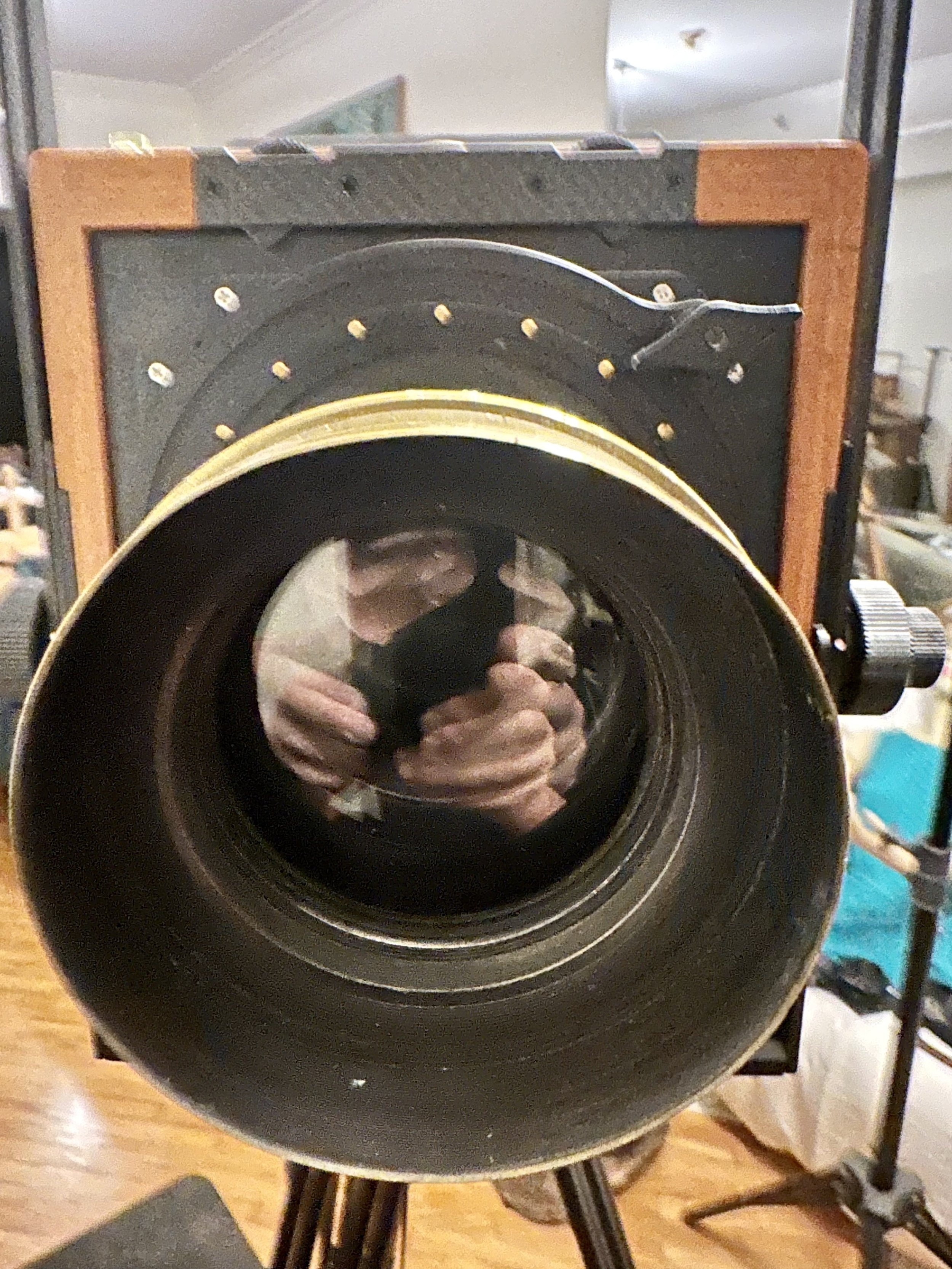Redefining Classics: An 8x10 Journey
Introduction
Dry plate photography, a pioneering advancement in photographic technology, eliminated the time-sensitive nature of its wet plate predecessor, thereby increasing the accessibility and practicality of the medium. When this technique is coupled with an 8x10 large format camera, the results are impeccably detailed and rich in tonality. The Emil Busch Aplanat (Rapid Rectilinear) 500mm F8 lens serves as a particularly optimal choice for this purpose, given its historic importance and technical features.
Emil Busch Aplanat Lens: A Brief Historical Context
Originating from one of Germany's most eminent lens manufacturers, Emil Busch Rathenow, the Aplanat lens marked a significant moment in optical history. The Aplanat, also known as the Rapid Rectilinear lens, was one of the earliest layouts to offer a corrected image field. This layout effectively countered the spherical and chromatic aberrations commonly encountered in earlier lenses. Its relatively lightweight construction offered photographers a viable alternative to the more cumbersome lenses that were predominant in studios at the time.
Technical Specifications of the Emil Busch Aplanat 500mm F8 Lens
The lens features an aperture of F8, which enables sufficient light passage without compromising image quality. The 500mm focal length provides a wide field of view, ideal for capturing expansive landscapes or detailed portraits. Its optical construction ensures minimal distortion and aberration, thus providing a well-corrected image.
Dry Plate Photography and the 8x10 Camera: An Ideal Partnership
An 8x10 camera allows for the use of a large surface area for the emulsion, thereby capturing a greater amount of detail. Dry plate photography eliminates the need for immediate development, which is particularly beneficial for fieldwork. When these two are combined, the possibilities for detailed, rich images are endless.
Operating Procedure
1. **Plate Preparation:** Coat an 8x10 glass plate with an emulsion and allow it to dry.
2. **Camera Setup:** Attach the Emil Busch Aplanat 500mm F8 lens to the 8x10 camera.
3. **Focusing:** Utilize the camera's ground glass to achieve desired focus.
4. **Exposure:** Set the lens aperture to F8 and expose the plate according to your light meter’s readings.
5. **Development:** Remove the exposed plate and proceed with development in a darkroom setting.
Conclusion
Utilizing an 8x10 camera equipped with the Emil Busch Aplanat (Rapid Rectilinear) 500mm F8 lens for dry plate photography brings together historical innovation and contemporary practice. This pairing allows for a high degree of control, resulting in images rich in detail and nuance. The Aplanat lens, with its corrected image field and lightweight construction, remains an ever-relevant choice for photographers who seek to marry the past and the present in their work.
For those interested in exploring the depths of photography's capabilities, this might be a combination that warrants serious consideration.



